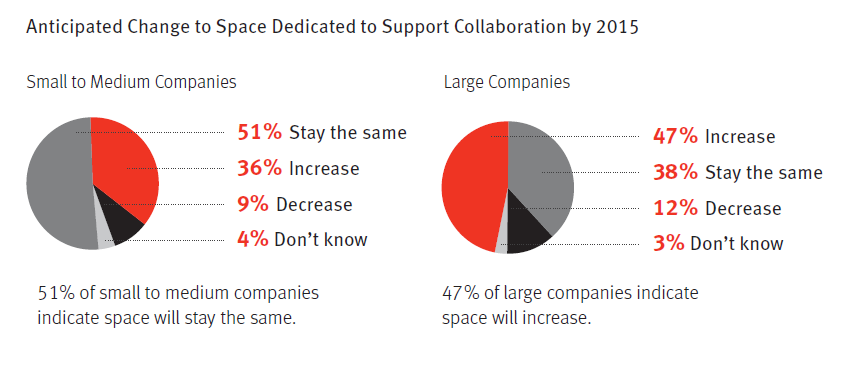
Nearly half of large companies around the world intend to increase dedicated collaborative space by 2015. We look at the simplest ways to incorporate collaboration in office design
By 2015, non-dedicated ‘team areas’ are predicted to have a larger share of the office, averaging 35% of space, according to research from Herman Miller. Their report on global office trends found that space for individual workstations was likely to have decreased by up to 22% by 2015.

Companies are beginning to recognize the value of interaction for both employee engagement and workplace productivity. Try it yourself with these tips:
Benches instead of cubicles
According to the Harvard Business Review, workplaces that enabled a line-of-sight connection between workers yielded more than a 15% increase in productivity. Benching systems improve on cubicles by lowering walls between desks and removing workers’ ownership of spaces. A first-come, first-served desk system allows greater variety of social interaction, meaning that workers get to engage with more colleagues than they would otherwise.
Brainstorming spaces
Brainstorming spaces are the fastest-growing type of collaborative space in American company headquarters. Even if you won’t be creating new rooms, you can give an unproductive, drab meeting room a makeover with wall-sized whiteboards or tack boards. Casual lounge seating and low tables will also foster collaborative interaction between colleagues.
Break rooms
Facilities dedicated to relaxation and socialization may sound wasteful, but big data proves otherwise. When Sociometric Solutions tracked workplace behaviors at one company, it found that staff who ate lunch at large tables of 12 were more productive than those who sat at small tables of four. They attributed the difference to higher engagement, as well as 36% higher daily interactions with other workers. When planning office kitchens or dining areas, ensure tables are large and communal to prevent social isolation.